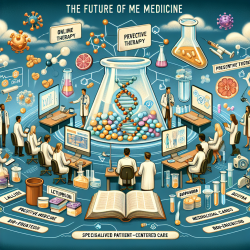Introduction
In today's educational landscape, the importance of fostering social-emotional strengths in adolescents cannot be overstated. The Social Emotional Health Survey-Secondary (SEHS-S) provides a robust framework for assessing these strengths, particularly among Spanish-speaking adolescents. This blog post explores the findings from a recent study on the SEHS-S and its implications for practitioners aiming to enhance their skills in promoting positive mental health outcomes in schools.
Understanding the SEHS-S Framework
The SEHS-S is a comprehensive tool designed to measure core psychological assets through a higher-order model known as Covitality. It encompasses 36 items across four latent traits: belief in self, belief in others, emotional competence, and engaged living. These traits are further divided into subscales such as self-efficacy, school support, emotional regulation, and gratitude, among others.
Research has consistently demonstrated the SEHS-S's validity and reliability across diverse cultural contexts, including Spanish-speaking adolescents. The study in question involved 1042 Spanish adolescents and confirmed the SEHS-S's factorial structure and concurrent validity with mental health indicators.
Key Findings and Implications
The study's findings highlight the critical role of Covitality in promoting adolescents' well-being. Covitality, as a composite measure of social-emotional strengths, showed positive associations with subjective well-being, health-related quality of life, and prosocial behaviors. Conversely, it negatively correlated with internalizing and externalizing symptoms, underscoring its protective potential against psychological distress.
For practitioners, these findings emphasize the importance of integrating strength-based assessments like the SEHS-S into school programs. By focusing on students' social-emotional strengths, schools can create environments that not only identify at-risk individuals early but also foster a culture of positive mental health.
Practical Applications
Implementing the SEHS-S in schools offers several practical benefits:
- Comprehensive Assessment: The SEHS-S provides a holistic view of students' mental health, balancing the assessment of psychological distress with indicators of positive well-being.
- Early Intervention: By identifying students' strengths and areas for growth, educators can tailor interventions to support individual needs, potentially preventing more severe mental health issues.
- Program Development: Data from the SEHS-S can inform the development of school-wide programs aimed at enhancing social-emotional competencies, ultimately contributing to a more supportive school climate.
Encouraging Further Research
While the SEHS-S has proven effective in various contexts, ongoing research is essential to refine its application and explore its impact on long-term mental health outcomes. Practitioners are encouraged to engage with the existing literature and contribute to the growing body of research on social-emotional health in adolescents.
To read the original research paper, please follow this link: Social Emotional Health Survey-Secondary (SEHS-S): A Universal Screening Measure of Social-Emotional Strengths for Spanish-Speaking Adolescents.










